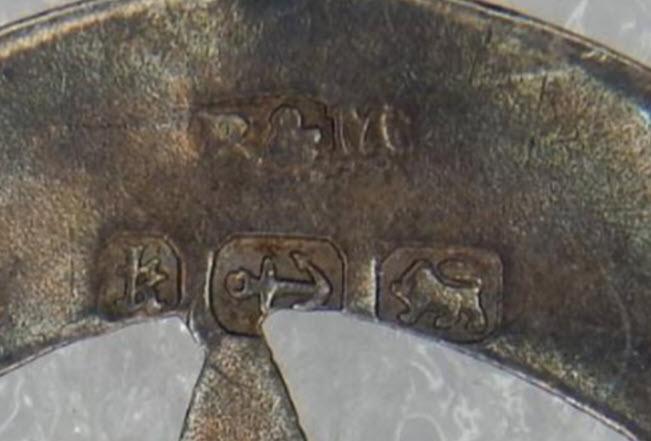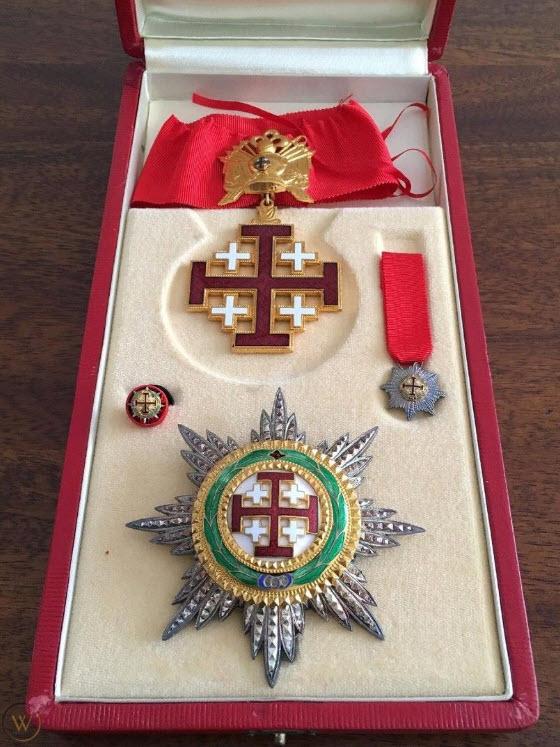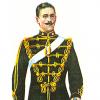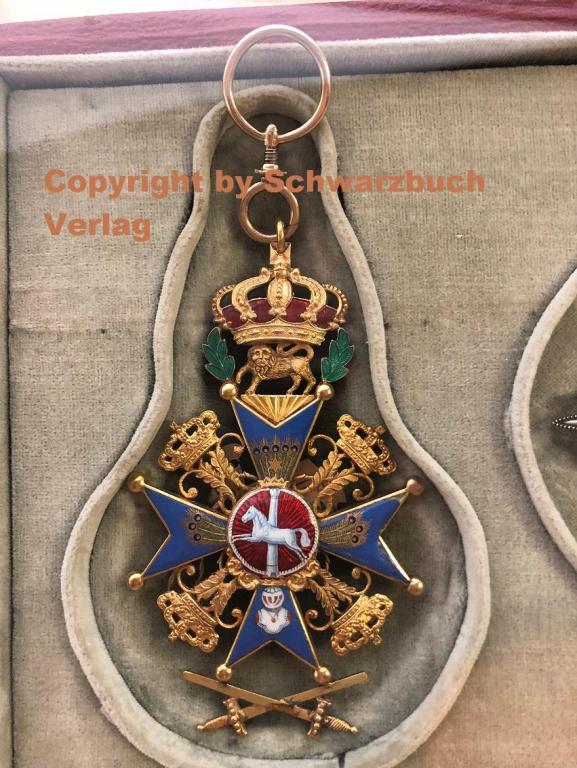-
Posts
574 -
Joined
-
Last visited
-
Days Won
2
Content Type
Profiles
Forums
Blogs
Gallery
Events
Store
Posts posted by Trooper_D
-
-
I certainly have to agree with you, BlackcowboyBS, that really is a most beautiful medal! Do you know the significance of the ring of eight stars, by any chance?
0 -
I can't add anything to his military career but there is some information about this interesting man - including how he became a Freiherr - and the estate in Northern Ireland he lost, here,
0 -
19 hours ago, Chris Boonzaier said:
Apparently with a bit of experiance the hour on the mule could also be used to catnap
The more I hear of this system, the better I like it
 0
0 -
23 hours ago, Chris Boonzaier said:
Hi, Apparently the 1 hour on one hour off gave a column a few kms more per hour than a pure marching column... the rest apparently did wonders... and added to that, all their kit, food, water etc was carried by the mules, so no heavy carrying.
Thanks for the confirmation and further explanation. Yes, I can quite see that not having to carry the heaviest of your kit would put a spring in your step 0
0 -
On 08/05/2021 at 17:59, Chris Boonzaier said:
[...] and composed of "Binom"... 2 Legionnaires with one Mule. During the marches one would walk, one would ride, and they would change every hour. It really upped the pace of Legion Columns...
Thanks for these interesting posts, Chris, but I am puzzling over how having one of the two Legionnaires mounted would improve the pace of a Legion column. I would have thought that the column could go no faster than the walking men, thus it would be no faster than if they were all walking.
Unless this is about saving the energy of the man who is mounted, thus ensuring that the column could march for longer in the day, even if not faster, than if they were all walking.
0 -
2 hours ago, Chris Boonzaier said:
Hi, about 15 by 18mm...
... which would be absolutely right for a ring.
So he wasn't the graf's younger son who ran away for some adventure, then

I wouldn't read too much into the box in which the sealing wax impression was housed as this is the kind of thing I would expect the aforementioned jeweller to present it in to the new owner of the ring. There is no reason why the impression may have been given as a keepsake, though.
I think that the mystery remains unresolved, although identifying the coat of arms would be a step forward, perhaps.
0 -
When one commissions a jeweller to make a signet- or seal-ring, along with the finished item one is typically given an impression in sealing wax to show that the finished ring produces the desired heraldic device. This is one of those. It looks like the kind of coat of arms that a noble family might bear. Was your legionnaire a 'von'?
Edited to add: the dimensions of the impression would help determine whether it was produced by a ring. What are they, please?
0 -
-
53 minutes ago, Ulsterman said:
... if only Rick was still here to enjoy/ write the story.
Amen!
0 -
The answer is going to be provided by identifying the ribbon of the second cross, isn't it?
0 -
This is not what you asked but, in case you didn't know, the hallmarks are for the Birmingham Assay Office and dated 1884. See this link,
https://www.silvermakersmarks.co.uk/Dates/Birmingham/Cycle 1875-1899.html
I can't identify the maker's name.
 0
0 -
23 hours ago, paul wood said:
I think the plug makes that fairly obvious. Often widows or other relatives removed the suspension to convert them into "pocket pieces". One could easily restore the suspension. Any how with or without suspension a rare wee beastie.
The lack of sharpness compared with the Dorotheum example, even taking into account wear, makes me wonder if this is not a cast copy*.
The plug hole is strange. All the examples in this thread have a suspension attached (soldered?) to the top of the medal rather than having a hole piercing the medal. Has this hole been made in a medal which had the top suspension removed? Furthermore, the plug appears to be of the same metal as the medal. In addition, it is almost invisible on the reverse.
All of this makes me wonder whether it is a cast copy of an original which had its top suspension removed and a hole drilled through it (why?).
* it has a number of the characteristics of an electrotype copy but I can't believe that anyone would go to the trouble.
0 -
7 hours ago, Gordon Craig said:
Jannis,
Thanks for the additional information. Your assumption that the older crosses did not have laurels and newer ones did seems reasonable. It would also seem that the medallion was also added at a later date. I found the following on a page in the Library of John F. Kennedy. It is interesting to note who bestowed this Knights Cross on Jackie Kennedy. Perhaps contacting the office in Jerusalem might help you resolve your question.
https://www.jfklibrary.org/asset-viewer/archives/JFKSG/JFKSG-MO-1963-1711-2c/JFKSG-MO-1963-1711-2c
Regards,
Gordon
Gordon
The Library of John F. Kennedy has got this seriously mixed up. The Grand Cross of the Equestrian Order of the Holy Sepulchre looks like this:

Source: https://www.worthpoint.com/worthopedia/order-holy-sepulchre-vatican-grand-1908172190
As the Library's catalogue entry text says (my emphasis),
QuoteKnight Grand Cross is one of the five classes of rank bestowed by the Equestrian Order of the Holy Sepulchre of Jerusalem. Membership in the Order is reserved solely for practicing Roman Catholics.
So why would it be presented by the Greek Orthodox Patriarch of Jerusalem? This should have jumped out at the cataloguer, one would have hoped.
That having been said, your advice to consult the office of the aforementioned Greek Orthodox Patriarch of Jerusalem about the Order which was actually awarded seems like a good idea.
0 -
The badge says Bombay Light Horse and, based on the link below, that seems right,
1 -
Do you have the dimensions of this badge? As the surface of this example is uniformly flat, I find it hard to believe that this particular one was made from a coin. However, if we know its diameter, it will be possible to identify the coin it might be fashioned from.
From my memory, the only one that might have been big enough would have been a 'half crown', which was made of silver, at that time, but was only 32mm in diameter (according to Wikipedia) so I wonder if it would have been big enough for this purpose.
0 -
If the tunnel was closed off and the air in it used up by the unfortunate soldiers, I wonder if that might have created conditions whereby everything would have been preserved as they were on the day of the bombardment. The article also refers to mummification present in the bodies of, I think, the soldiers dug out of the tunnel found in the 1970s, another indication of optimal conditions for preservation. All of that being the case, I suppose it might be that items found in the tunnel would have appeared in auction houses - or the 'Bay - before long.
0 -
A fascinating story, Claudius. Thanks for bringing it to our attention.
For those who are interested, it concerns the fatal entombment of soldiers of the 10th and 11th companies of the 111th Reserve Regiment, during a French bombardment on 4 May 1917, and the recent rediscovery of the tunnel they were trapped in.
Worth reading.
Edited to add: I don't completely understand the seeming indifference of the German War Graves Commission (VDK) to identifying and reinterring the bodies.
1 -
10 hours ago, Utgardloki said:
According to the entry in Meyers Konversationslexikon(1905) they discarded the wearing of weapons and only accepted the military-service when being forced.
I guess they might have been sort of a source of unrest within the armed forces, why some generals/officers or other deciding authorities might have disliked them. Or they just were discriminated because of their beliefs. But all that is pure speculation. The book cited in the article "Der Nazarenismus" by Szeberényi might give answers.
But apart from that, I wouldn't understand why a member of this group, when being a soldier like every other one, fulfilling all the rules, shouldn't get the cross.
Thank you for this further information, which does suggest what was behind the official thinking. However, as you have indicated, this prohibition doesn’t appear completely logical.
0 -
This has been a very interesting thread and I join Graham and Ian in giving kudos to Utgardloki for correcting this misconception.
However, it raises a new question, does it not? Why should members of the Nazarenes - a Christian sect - be prevented from being awarded the Karl-Truppenkreuz?
0 -
Thanks for your kind words, Dom, and good luck with your search for an RAMC cap.
0 -
Thanks for posting what is, perhaps, the final piece in the puzzle. This has been an interesting thread which has thrown a much needed light on the role of American volunteer medics in France before the official entry of the USA into the Great War.
0 -
Thank you for the link to 'The Lost Legion'. What a shame it doesn't have an index! However, the search function indicates that there were no mention of our man in the text. He does appear in the Roll of Honour, however, which shows the names of the 1,500 who served.
Interestingly, where appropriate, the MC (and other decorations earned) is shown as a post-nominal, giving an indication of how many were awarded,
https://babel.hathitrust.org/cgi/pt?id=mdp.39015039349421&view=1up&seq=413
The page linked to belowe shows the abbreviations used in the book for decorations awarded, showing the range of British decorations awarded to these American doctors (one tiny quibble, it lists the MC under 'Decorations for Valor', whereas we have identified that it wasn't awarded exclusively for bravery),
https://babel.hathitrust.org/cgi/pt?id=mdp.39015039349421&view=1up&seq=432
Thank you, also, for the link to the pamphlet 'The Army Medical Corps Reserve in World War I'. Those who prefer to read it on screen, rather than downloading it, maybe interested in this link
https://alphaomegaalpha.org/pharos/PDFs/2018/Winter/2018-1-Wood.pdf
0 -
Dom
Thank you for posting the link to what looks like a fascinating paper, which I have saved for later reading. I suspect that, once it has been digested, it will give us much better insights into what seems to be a little known aspect of Anglo-American cooperation during the Great War.
0 -
I wonder what kind of numbers these badges were made in? My point being, if the production run was in the many 10s or even 100s we, perhaps, shouldn’t expect to see the same quality as we find with Orders.
0





Lifesaving Medals
in Germany: Imperial: The Orders, Decorations and Medals of The Imperial German States
Posted
Thank you BlackcowboyBS and 91-old-inf-reg for your most interesting contributions to this discussion - that's why we come here, isn't it!?
What an interesting observation that, more often than not, this medal was worn 'the wrong way round' for (understandable) aesthetic reasons, BlackcowboyBS!
91-old-inf-reg, your account of the symbolism is compelling, thank you. Apropos your reference to artistic depictions, I hope that it is not too far off topic to mention Titian's perspective on the Dionysus/Bacchus and Ariadne story, which can be seen here (note the constellation in the top left of the painting),
https://en.wikipedia.org/wiki/Ariadne#/media/File:Titian_Bacchus_and_Ariadne.jpg